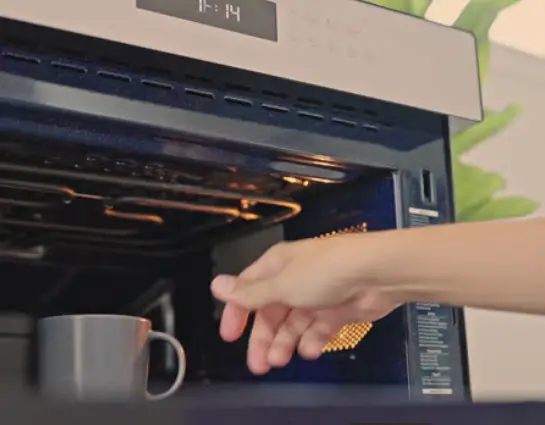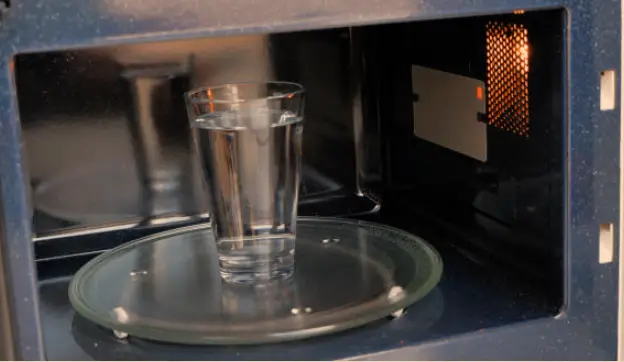If you’ve ever tried to reheat your morning coffee or tea in a glass cup in the microwave, you may have wondered: Is it actually safe to microwave glassware?
Most of us have been warned since childhood not to put metal objects in the microwave for fear of sparking and starting a fire.
But glass seems so innocuous and microwave-friendly. Surely that dainty tea cup or sturdy glass mug is okay to zap, right?
The honest answer is that it depends. Not all glassware is created equal when it comes to microwave safety. Several factors determine whether a particular glass cup, bowl, or plate can go in the microwave without risk of damage, shattering, or sparking.
Before you nuke your next beverage or meal in a glass container, keep reading to learn the dos and don’ts of microwaving glassware.

Heat Resistance
The most crucial factor is whether the glass is heat-resistant or thermal shock-resistant. Regular annealed glass that has not been specially treated or tempered is prone to shattering or cracking when exposed to drastic temperature changes. This is because the inner and outer layers of the glass expand and contract at different rates as they heat and cool.
To be safe for microwave use, glass needs to be made of heat-treated or tempered material that has been specially formulated to withstand the thermal shock of rapid temperature fluctuations. Look for glassware labeled as microwave, oven, or heat-safe. Brands like Pyrex, Arcuisine, and Anchor Hocking specialize in making durable, microwave-friendly glass bakeware and dishware.
Glass Composition
In addition to heat treatment, the chemical composition of the glass itself is important for microwave safety. Glass made with an abundance of lead oxide or other conductive mineral additives may allow microwave energy to pass through and potentially cause arcing or even microwave oven damage.
Most modern glass kitchen and tableware produced in the United States and Europe is formulated with microwave-safe minerals and low-conductive elements. However, you may want to avoid microwaving antique, decorative, or handmade glass pieces unless you know the specific materials and manufacturing methods that certify them as microwave-friendly.
Additional Cautions
While heat-treated borosilicate or tempered soda lime glassware may be technically microwave-safe, there are still some additional precautions and best practices to keep in mind:
Avoid microwaving cracked, chipped, or damaged glass
Don’t microwave empty glass containers; add water or food first to help absorb microwaves
Skip decorative glass that includes metal trim, paint, or other embellishments
Use microwave-safe plastic wrap or a paper towel to cover containers and prevent splatter
Let containers and dishware cool briefly before removing from microwave
Stir periodically to help distribute heat evenly and avoid hot spots
Use lower power settings and shorter bursts of heating when possible
Space multiple glass containers a few inches apart in the microwave
Even with suitable microwave-safe glass, it’s wise to keep a close eye on containers while heating just in case unexpected shattering, cracking, scorching, or arcing occurs.
Safe Glass Container Options
If you want to be absolutely certain your glassware can withstand the heat and energy of microwave cooking, here are some excellent options to look for:
Pyrex Glassware: The original heat-resistant glass bakeware, Pyrex has been a trusted microwave-safe kitchen brand for over 100 years. The clear, durable borosilicate glass can take hot and cold temperatures with ease.
Anchor Hocking Glassware: Featuring affordable microwave-safe glass baking dishes, plates, bowls, and more. The OvenCraft+ line is specifically designed to go straight from freezer to oven or microwave.
Arcuisine Glass Cups/Mugs With thick tempered glass and easy-grip shape, these microwave-safe glass mugs and cups can safely reheat beverages without cracking.
Boroscillicate Glass Cookware: Any quality borosilicate glass pots, pans, and bakeware will be able to withstand intense microwave heating. Popular brands include Simax and VISIONS.
The microwave’s effect on different dishes and containers is an often overlooked aspect of kitchen safety. While the majority of modern glass bakeware and serving pieces are designed to withstand microwave conditions, erring on the side of caution with specialized heat-safe varieties provides valuable peace of mind. Do your research for any older, unusual, or handmade glass pieces before subjecting them to the microwave’s intensity.
When used properly, microwaving food and drinks in suitable glass containers offers a durable, non-toxic, easy-to-clean alternative to plastic. Just make sure to double-check manufacturer guidelines for microwave safety and resist the urge to reheat beverages in grandma’s vintage crystal vase or a hand-blown art glass tumbler from the craft fair. Your microwave and your taste buds will thank you.




